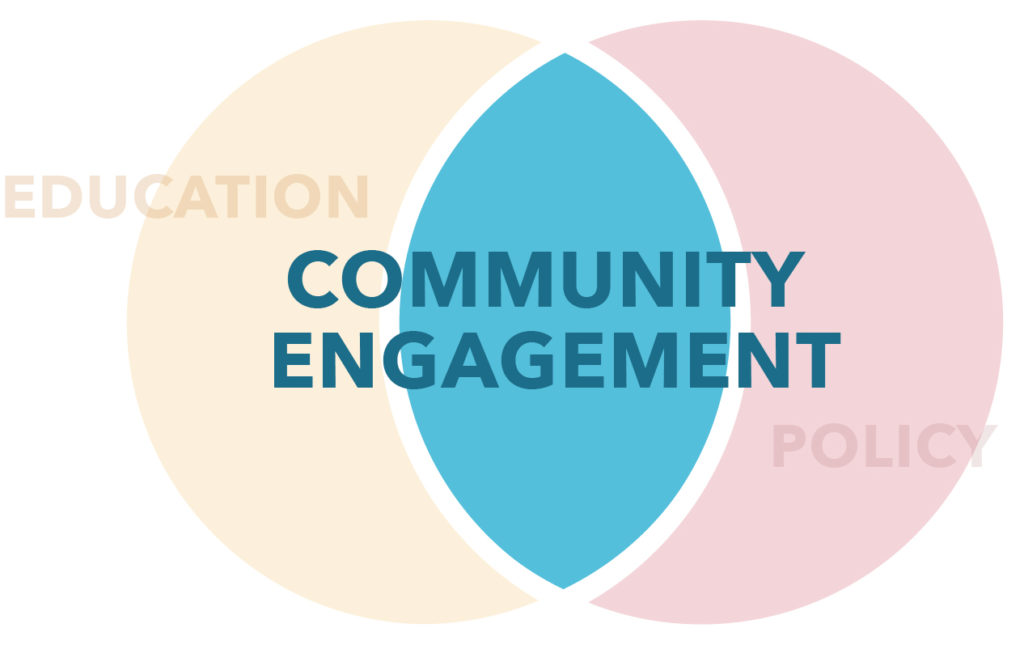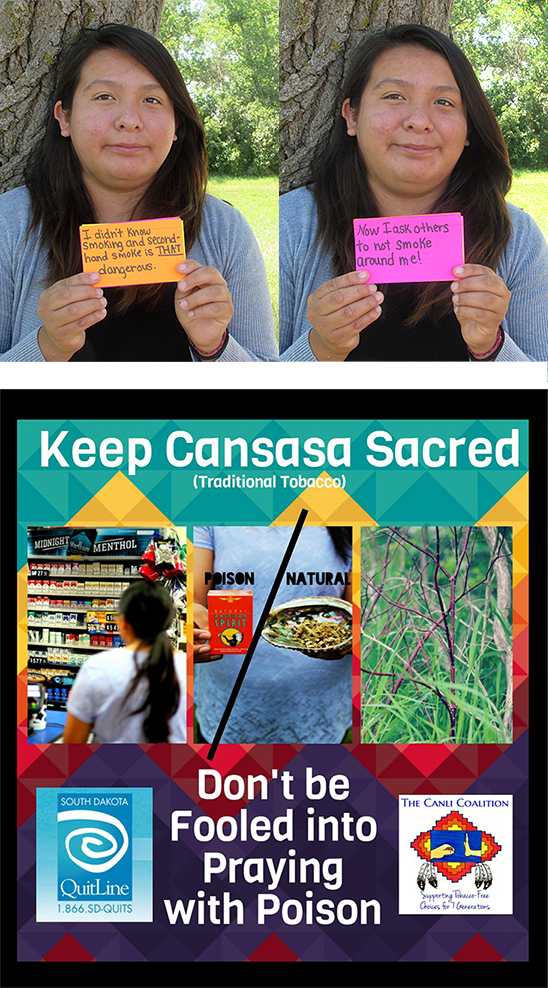A picture (or video) can be worth a thousand words and has potential to be a change agent. This can be done through digital note card stories or through photo-voice/digital storytelling—a process where people use video and/or photo images to capture pieces of their environment and experiences. Facts, captions, or audio recordings paired with the images bring the realities home to the public and policy makers to create change. (Social media is a form of digital media, but is covered in the social media section.)

Planning
- Recruit participants—one or two leaders and others to help tell/show your message.
- Have participants sign a media release form (if under age 18 a parent or legal guardian must sign).
- Prepare:
- Storyline—decide on the visuals and audio for each scene. View the Čaŋlí Coalition’s template.
- Roles—who will take pictures or video, act, and edit.
- Get out and take photos/video—take multiple shots of each scene (close up, far away, different angles, etc.).
- Put it all together and share!
Materials needed
- Media Release form
- Photo/video equipment—camera or smartphone
- Digital frame for note card stories
- A video app or program to edit the video, such as iMovie
Resources
- Community Toolbox Section on Implementing PhotoVoice in Your Community from Kansas University
- Yvonne Poitras Pratt’s book on Digital Storytelling in Idigenous Education: A Decolonizing Journey for a Metis Community
- The Čaŋlí Coalition’s Digital Story
Follow-up
- Did the digital media help the public develop a better understanding of the issue or create change?
- Are there other stories that could be told using digital media?
Hints
- Attend a PhotoVoice or Digital Storytelling Workshop to learn how to create short videos.
- Watch a few YouTube videos to learn how to make videos.
- Enlist help from high school students with experience creating videos, graphics, or photography.
Čaŋlí Coalition Example

Note card stories were the Čaŋlí Coalition’s way of getting inspirational stories from local tribal members out in the community. Once we found someone willing to share a story, we helped them craft it into short sentences on large note cards. We then loaded the still photos onto digital picture frames and put them in waiting rooms (clinic, Department of Social Services, dentist, and etc.) throughout the reservation.

To include cultural lifeways we… incorporated Lakota language and traditional practices into digital media.